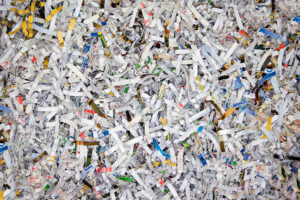In the grand tapestry of healthcare, where the primary focus is on diagnoses, treatments, and recovery, there’s an unsung element that plays a monumental role in patient safety: medical waste management. Though it might operate behind the scenes, efficient and effective handling of medical waste directly impacts the health and safety of patients. Here’s how.
1. Minimizing Risk of Infections
Medical waste can be a breeding ground for harmful microorganisms. Improper disposal or containment could lead to these pathogens entering patient care areas, posing a direct risk of infections. By following stringent medical waste management protocols, hospitals and clinics can significantly reduce the risk of healthcare-associated infections.
2. Preventing Physical Injuries
Sharps, such as needles, scalpels, and broken glass, are a common type of medical waste. If not disposed of correctly, these items can cause injuries, leading to potential transmission of diseases. Proper sharps disposal ensures that patients, along with medical staff, remain safe from accidental pricks or cuts.
3. Safeguarding Against Chemical Exposure
Medical procedures often require the use of various chemicals. Once deemed waste, if not handled correctly, these substances can spill or leak, leading to fumes or direct patient exposure. Medical waste management includes the safe containment and disposal of chemical waste, protecting patients from harmful exposures.
4. Protecting Sensitive Patient Data
Medical waste isn’t limited to physical substances. It also includes outdated patient records or information printouts that can compromise patient privacy if they fall into the wrong hands. Proper document destruction as a part of medical waste management ensures patient confidentiality remains intact.
5. Ensuring Drug Safety
Expired or unused medications, if not disposed of properly, might end up being ingested accidentally, leading to adverse reactions. Furthermore, certain medications can be abused if accessed inappropriately. Efficient pharmaceutical waste disposal ensures these drugs are destroyed and rendered unusable, safeguarding patient health.
6. Maintaining a Healthy Environment
Patients benefit from a clean and hygienic environment, which aids in recovery and well-being. Proper medical waste management, which includes timely removal and disposal, ensures that the healthcare setting remains pristine, positively impacting patient health.
7. Upholding Trust and Peace of Mind
When patients notice stringent waste management practices in place, it fosters trust. They feel at ease, knowing that their health is a priority, not just in direct care but also in environmental aspects of the facility.
In Conclusion
Medical waste management is a cornerstone of patient safety. It operates quietly in the background but ensures that the healthcare environment remains as secure and risk-free as possible. As the medical world advances, so does the importance of waste management, reflecting the commitment of healthcare providers to uphold the highest standards of patient safety and care.
Every patient deserves the highest level of safety and care. If you’re interested in understanding more about how medical waste management plays a role in patient safety, reach out to our experts for insights and guidance.










